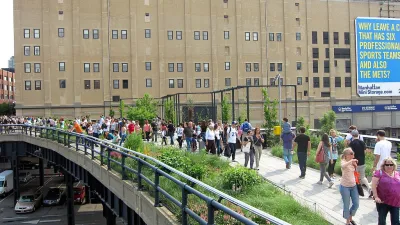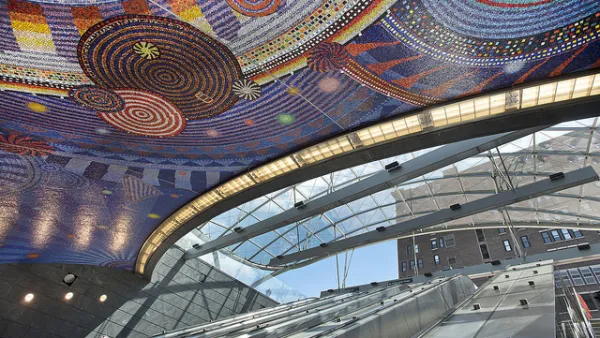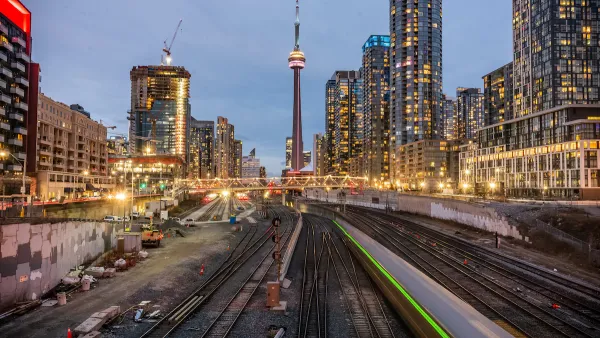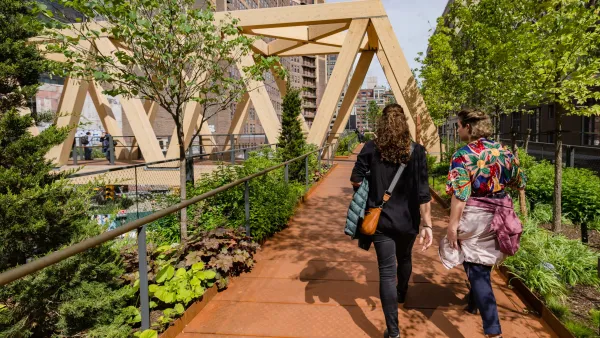The projects depicted here re-use and re-appropriate public space, filling gaps in the built environment with parks, open areas, and pedestrian walkways.

New York's High Line is only one example of the re-appropriation of heavy infrastructure and the spaces it leaves unfilled. This piece lists nine more projects: "What these types of retrofits mean for city dwellers: that any one of them has just as much a right to the use of their city's public space as do the large-scale, heavy-duty applications that previously had exclusive claim to it."
Ross Brady continues, "As for the designs of these new spaces, the evolution of this practice owes a lot to the theoretical emergence of landscape urbanism — that is, that a city should be defined by its open spaces and that its buildings should be understood as structures that simply occur around them." The projects reuse many kinds of spaces, and that reuse doesn't necessarily spell an end to original functions. Examples include:
- Queens Plaza Bicycle and Pedestrian Improvement Project; Long Island City, NY
- Times Square Reconstruction; New York City, NY
- Erie Street Plaza; Milwaukee, WI
- Seattle Art Museum: Olympic Sculpture Park; Seattle, WA
FULL STORY: Contested Landscapes: 9 Public Re-Appropriations of Urban Infrastructure

National Parks Layoffs Will Cause Communities to Lose Billions
Thousands of essential park workers were laid off this week, just before the busy spring break season.

Retro-silient?: America’s First “Eco-burb,” The Woodlands Turns 50
A master-planned community north of Houston offers lessons on green infrastructure and resilient design, but falls short of its founder’s lofty affordability and walkability goals.

Delivering for America Plan Will Downgrade Mail Service in at Least 49.5 Percent of Zip Codes
Republican and Democrat lawmakers criticize the plan for its disproportionate negative impact on rural communities.

Test News Post 1
This is a summary

Test News Headline 46
Test for the image on the front page.

Balancing Bombs and Butterflies: How the National Guard Protects a Rare Species
The National Guard at Fort Indiantown Gap uses GIS technology and land management strategies to balance military training with conservation efforts, ensuring the survival of the rare eastern regal fritillary butterfly.
Urban Design for Planners 1: Software Tools
This six-course series explores essential urban design concepts using open source software and equips planners with the tools they need to participate fully in the urban design process.
Planning for Universal Design
Learn the tools for implementing Universal Design in planning regulations.
EMC Planning Group, Inc.
Planetizen
Planetizen
Mpact (formerly Rail~Volution)
Great Falls Development Authority, Inc.
HUDs Office of Policy Development and Research
NYU Wagner Graduate School of Public Service





























